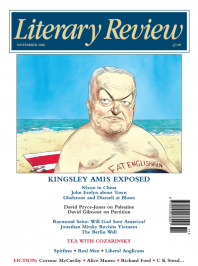Patrick O’Connor
Patrick O’Connor Meets Edgardo Cozarinsky
In her introduction to Edgardo Cozarinsky's collection of stories, Urban Voodoo (first published in Buenos Aires in 1985), Susan Sontag defined him as a filmmaker turned writer. She wrote that his tales, with their unforgettable visual descriptions, belonged to a tradition of 'rueful, semi-hallucinatory depictions of … the strangeness of modern city life'. In the new century, Cozarinsky has established himself as one of the most individual voices to emerge from modern Argentina. If some people see him as a disciple of Borges (his early books include Borges In and On Film), Cozarinsky cites Henry James as the first and most important influence on his work. His novels and stories, while they have a brevity unknown to James, are full of hidden, half-told histories, subtle references to names, tunes, places that may mean little at first but which are imbued with the melancholy of tango, the hopelessness of exile and the allure of the exotic; exciting when seen from the distance of time, tawdry and deceptive up close.
Cozarinsky's latest book, The Moldavian Pimp (Harvill Secker), is based on a little-known part of twentieth-century Argentinian history. In 1891, a large portion of land was sold by the Argentinian government to Baron Maurice de Hirsch, who had the intention of setting up 'colonies' for persecuted Jews, many, though not

Sign Up to our newsletter
Receive free articles, highlights from the archive, news, details of prizes, and much more.@Lit_Review
Follow Literary Review on Twitter
Twitter Feed
It wasn’t until 1825 that Pepys’s diary became available for the first time. How it was eventually decrypted and published is a story of subterfuge and duplicity.
Kate Loveman tells the tale.
Kate Loveman - Publishing Pepys
Kate Loveman: Publishing Pepys
literaryreview.co.uk
Arthur Christopher Benson was a pillar of the Edwardian establishment. He was supremely well connected. As his newly published diaries reveal, he was also riotously indiscreet.
Piers Brendon compares Benson’s journals to others from the 20th century.
Piers Brendon - Land of Dopes & Tories
Piers Brendon: Land of Dopes & Tories - The Benson Diaries: Selections from the Diary of Arthur Christopher Benson by Eamon Duffy & Ronald Hyam (edd)
literaryreview.co.uk
Of the siblings Gwen and Augustus John, it is Augustus who has commanded most attention from collectors and connoisseurs.
Was he really the finer artist, asks Tanya Harrod, or is it time Gwen emerged from her brother’s shadow?
Tanya Harrod - Cut from the Same Canvas
Tanya Harrod: Cut from the Same Canvas - Artists, Siblings, Visionaries: The Lives and Loves of Gwen and Augustus John by Judith Mackrell
literaryreview.co.uk